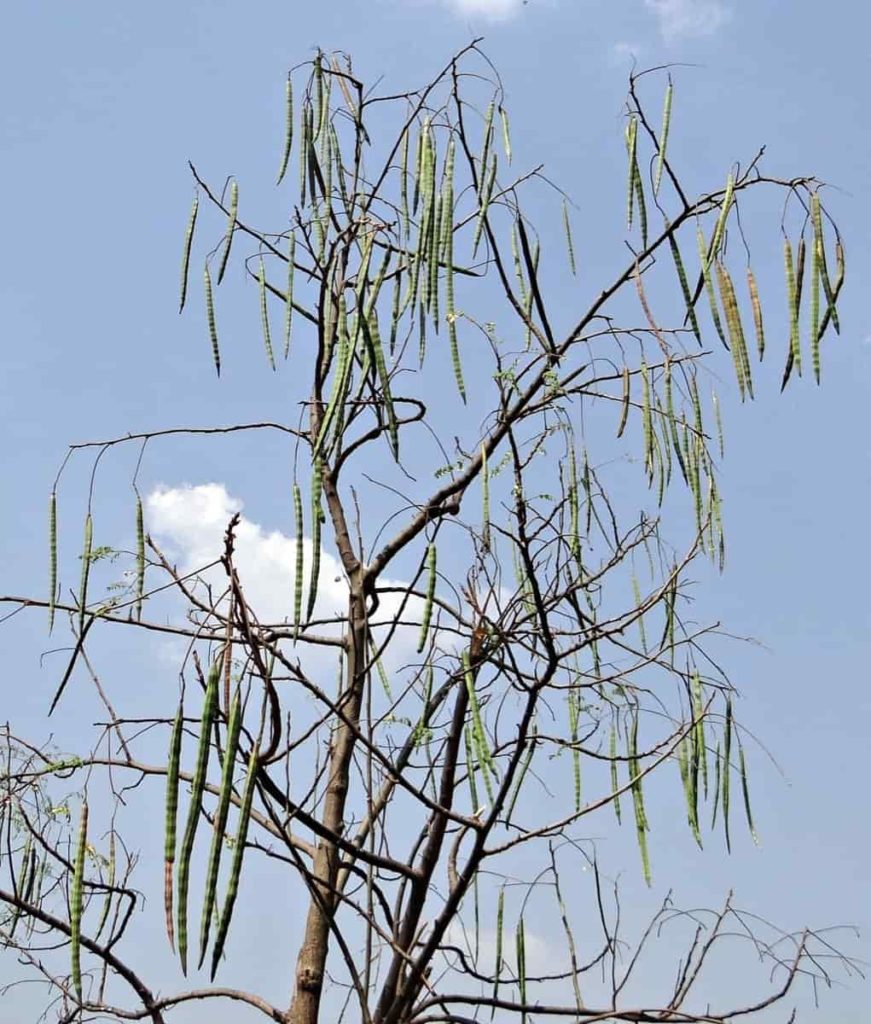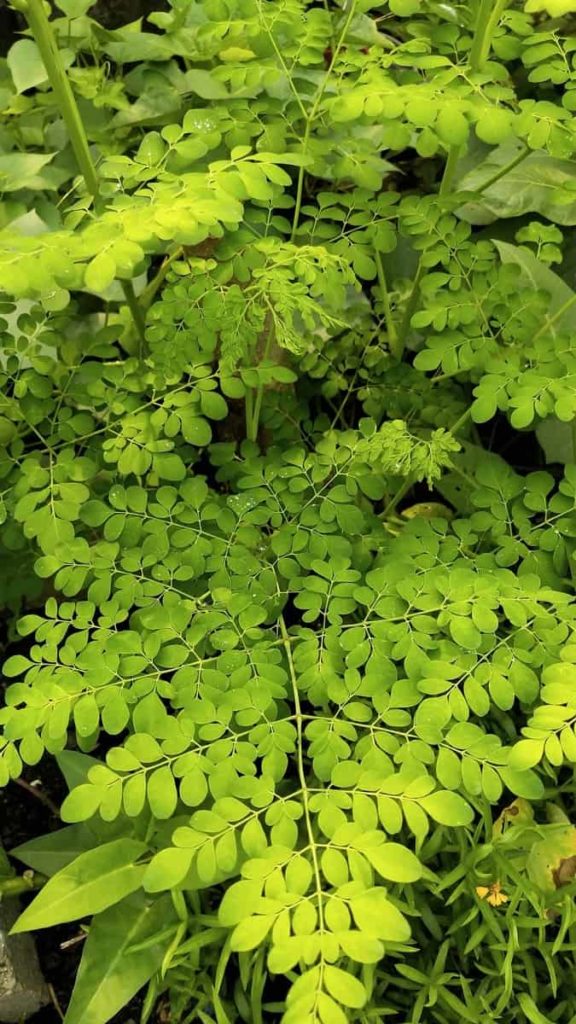Hello friends, Are you thinking of how to grow Moringa tree from seeds in backyard? Well, you have landed on the right page. Moringa trees are versatile and fast-growing trees. The Moringa tree is called the horseradish tree, miracle tree, or ben oil tree. Easily adaptable to poor soil, they grow quickly from cuttings and seeds. It is one of the fastest-growing trees, with an annual growth of at least 8-10 feet. Planting a Moringa tree in the spring to take full advantage of the growing season. A taproot and many smaller feeder roots make up the tree’s unique root system.
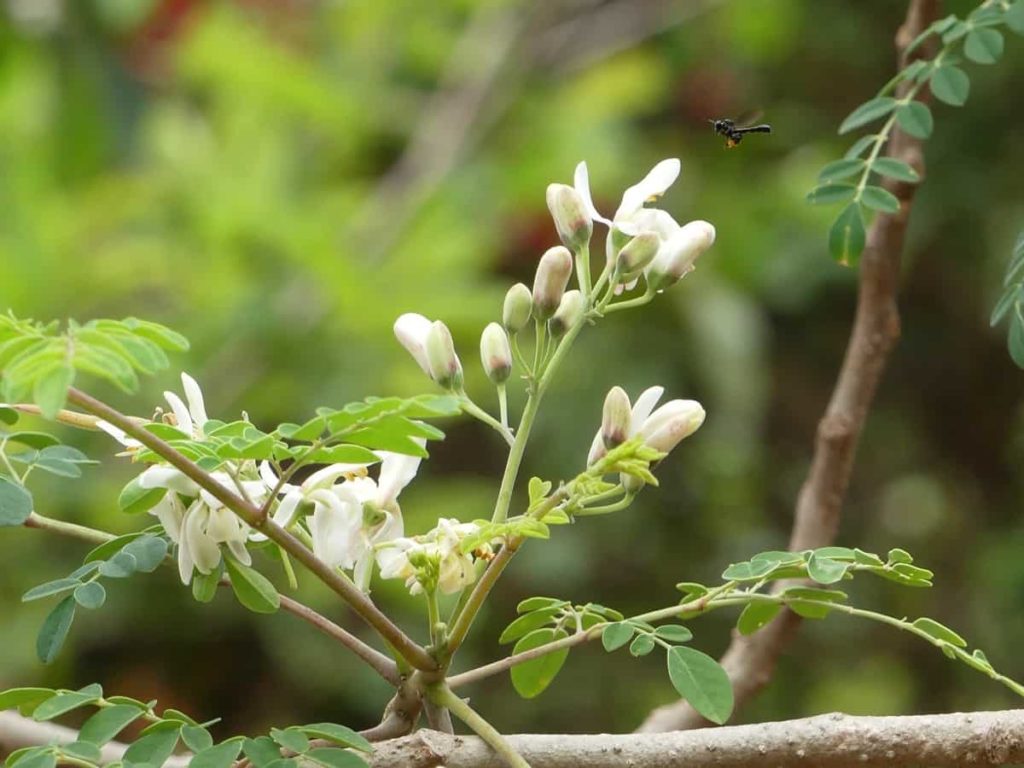
Moringa trees can be cultivated as specimen trees or thick hedges. While Moringa is native to subtropical climates, it can grow well in other areas if protected from cold temperatures and harsh frosts. From this guide, you will get an idea about how to grow these miracle trees and reap their benefits throughout the year. Moringa trees reach heights of 30 feet and have beautiful gray bark. Three unique pairs of paired leaves grow from the main stem of this plant, making its leaves unique in shape.
A small oval-shaped leaflet with a large base is included in each set. Despite its mild fragrance, drumstick plants bear beautiful clusters of blossoms. The Moringa flower is white, dainty, and pealike in shape, with five stamens on one side. The plant also bears drumsticks, the pods of which are slightly angled and shaped like daggers. The drumstick can reach 18 inches in length and burst open when ripe to release its seeds. However, it can take up to 8 months for the Moringa tree to fully mature after planting it with Moringa seeds.
How to grow Moringa tree from seeds in backyard
When to Plant Moringa
Tropical or subtropical climates are ideal for growing Moringa trees. As long as the soil mixture is warm, seeds can germinate for an entire year. The best period to plant Moringa seeds is in the spring. Planting trees in the colder months when the temperature is below 10°C is not recommended. Indoors, Moringa can be grown in containers when the temperature drops. A soil temperature of 20°C to 26°C is ideal for germinating Moringa seeds. Shade is no problem for this sun-loving plant. Cover the plant with mulch to help it retain moisture and keep it hydrated at all times.
In case you missed it: How to Grow Moringa Tree Faster: Best Tips to Increase Flowering, Fruiting, and Production Yield
Where to plant Moringa
Moringa trees can grow in the ground but are often started in containers. Protecting young plants and saplings from harsh winds and stormy weather is important. Plants should be protected from the wind by wind barriers made of rocks, soil, and sand. Due to their deep taproot system, Moringa trees require lots of space for their roots to spread. Most trees prefer loamy or sandy soils because these types offer the best conditions for growing roots deep into the soil or potting mix.
Loose soil ensures good drainage as well. They will need full sun exposure year-round, so select a spot with excellent sunlight. The plant does not tolerate frosts since it is native to subtropical and semi-arid regions. You should add compost or manure to the soil when growing Moringa. Depending on the size of the tree’s canopy, spread a layer of compost around the base. pH levels between 6.5-7.5 are optimal for the plants. They do best in slightly acidic or neutral soils.
How to plant Moringa
The soil must be prepared before planting a young Moringa tree sapling. Amending the soil at this time is a good idea. Combining one part sand and one part compost with the soil should ensure good drainage. If the soil is already sandy, you can mix in some compost on its own. Dig out a 3-4 foot hole and loosen it. This loosening will allow you to confirm that no heavy clay soils are beneath the surface.
Planting Moringa seeds in a pot indoors
You should use a deep container when starting seeds indoors and protect them from harsh winds, temperatures, or wildlife.
- Seeds should be soaked overnight in water to speed germination.
- Loose soil should be filled into a pot 12-18 inches.
- A pot can usually hold five dwarf Moringa trees, but if a few seeds don’t sprout, it’s best to plant 7 or 8 at first.
- Space out to 1-inch deep holes in the soil.
- Seeds should be inserted into each hole and lightly covered with soil.
- Pruning should begin once there are at least two layers of branches on the plants. Firstly, remove the seedlings’ tops and cut the branches back to half their length.
- New leaves should be checked at least once a week when the tree is young. Usually, new leaves appear at the tops and the intersections or forks of branches. Cut these back as well.
- In addition to keeping the tree small, pruning it will produce a lot of tasty leaves.
In case you missed it: How to Grow Cantaloupe Faster: Best Tips to increase Flowering, Fruiting, and Production Yield
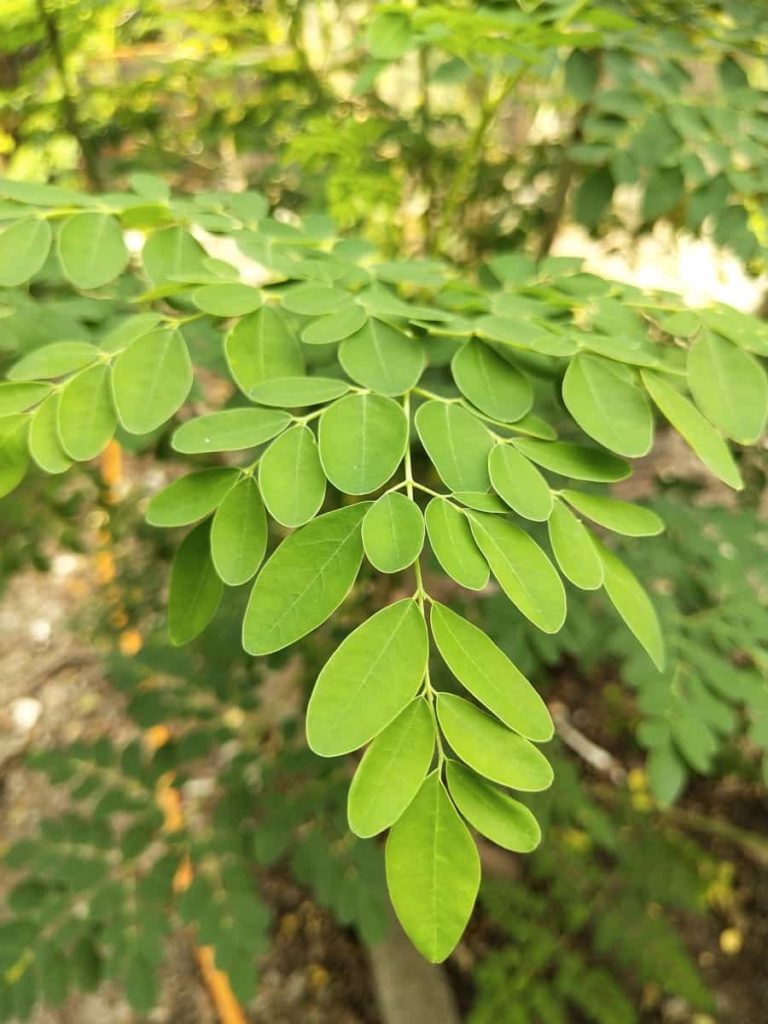
Before being transplanted outside, The plants should be hardened off. Dig a hole about double the rootball size of the seedling and place it in a spot exposed to sunlight. Ensure the top of the rootball is flush with the soil line, and backfill the hole with soil, sand, and compost mixture. Water the planted seedling lightly after planting, taking care not to overwater.
Growing Moringa tree from stem cuttings outdoors
Moringa trees can grow from seeds or cuttings easily. Their growth is rapid, even in poor soil, and they bloom eight months after planting. It is necessary to cut off the branches of the Moringa trees after they have stopped producing fruit each year to promote new growth. New trees can be grown from these branches.
- Take a stem cut from the mother plant you have chosen. Ideally, it should have a diameter of one inch and a length of six feet.
- Dig a hole 3 feet x 3 feet and 3 ft deep.
- Fill this hole with soil, sand, and composted manure after placing the cutting.
- Be sure to pack firmly around the base of the cutting. Slop down slightly away from the cutting as you form a dome or cone shape. Water shouldn’t touch its stem for a new tree to grow well.
- The cutting should be watered generously but not drowned.
Growing Moringa from seed outdoors
The Moringa plant grows readily from seeds. The seeds of Moringa have no dormancy and should be planted immediately after harvesting. The germination rate of fresh seeds remains excellent for up to a year. However, since the taproot of the Moringa plant is long, it is difficult to transplant the seeds.
- The soil must be dug about a foot deep and wide to loosen it up, and then the hole is backed up with compost and sand.
- Keep 3 to 5 seeds in each hole, about 1/2 inch.
- Cover with soil, and after that, watering should be done generously. It is very crucial to keep the soil moist but not soggy.
- Once the seedlings are 4-6 inches tall, thin them and keep the healthiest ones and remove the others
In case you missed it: How to Grow Watermelon Faster: Best Tips to increase Flowering, Fruiting, and Production Yield
Moringa plant spacing
The Moringa tree grows into a medium-sized tree, so it is best grown directly in garden beds. A lot of soil space is needed for the roots of Moringa trees since they develop taproots. Therefore, Moringa trees must be spaced at least 3 meters apart for good growth. It is best to plant Moringas directly in the garden if the temperature doesn’t drop below freezing.
Moringa plant care
Especially when grown outdoors, Moringa plants require little maintenance and care. However, for gardeners living in climates other than tropical or subtropical, moving Moringa plants indoors during cool weather is necessary. They grow well in containers at least 30 inches in diameter. Additionally, Moringa is a deciduous tree that grows quickly. Once established, they can withstand temperatures up to 48°C and are drought-resistant.
How much water you should apply to your Moringa plants?
Maintaining the soil moist but not wet around Moringa plants is very important. Moringa plants do not tolerate wet conditions and are sensitive to overwatering. Moringa plants are drought-tolerant once established, but young plants need consistent moisture to grow well. Therefore, watering Moringa plants infrequently with deep water is more effective than watering them frequently with light water.
How and When to fertilize your Moringa Plants/Trees
When planting, add compost to the soil to provide nutrients. If a 3-inch layer of compost is regularly applied around the tree, it will not need a separate fertilizer. It is acceptable to use both cow manure and horse manure as alternatives. Moringa plants benefit from a light application of an all-purpose fertilizer to support growth. It is not necessary to fertilize Moringa plants regularly once they are established.
It is, however, beneficial to amend the topsoil with compost or manure regularly. Despite not adding compost or manure, you may find that Moringa trees perform just fine without it. The tree’s roots will find pockets of material deep under the surface where it can feed. Early spring is the best period to apply a slow-release all-purpose granular fertilizer.
Potting and repotting Moringa plants
Unless the Moringa plants can be exposed to tropical or subtropical temperatures year-round outdoors, Moringa plants can be grown in containers. It is easy to move Moringa plants indoors to avoid the cold winter temperatures when grown in containers. While young plants can be planted in 6- to 7-inch pots, as they grow, they should be moved to bigger pots due to their deep taproot system. You can use a 30-inch pot or larger to house the Moringa. Before the plant becomes rootbound, transplant it well before it becomes difficult to remove.
In case you missed it: How to Grow Peas Faster: Best Tips to Increase Flowering, Fruiting, and Production Yield
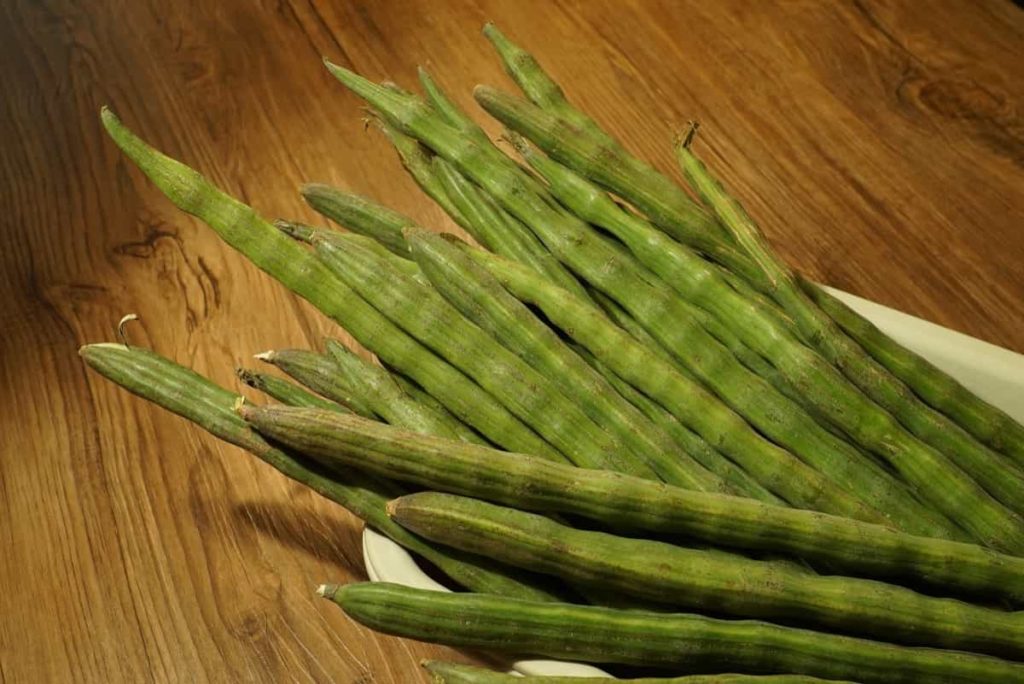
Pruning
Pruning Moringa plants regularly promotes leaf growth and prevents trees from growing too tall. Moringa plants will grow tall with many branches and few leaves if they are left unpruned, and they will only flower near the top of their branches, making harvesting difficult. Regular pruning and branching also help to increase the harvest of leaves, flowers, pods, seeds, and roots, which are all edible.
Common Moringa plant pests
The Moringa plant is resistant to a wide range of diseases and pests. However, it is still possible for established Moringa trees to be infested by termites. Mulching around the tree’s base with castor oil plant leaves, mahogany chips, tephrosia leaves, or Persian lilac leaves can help prevent termites. In particular, Noctuidae species, such as armyworms and cutworms, threaten Moringa. An assortment of caterpillars is also present. A pesticide spray on the tree can eliminate all of these problems.
Some forms of stem borer can cause problems. To lay its eggs, the adult beetle must find a healthy twig. As soon as the larvae hatch, they dig and enter into the stem and consume the center. Yellow leaves will appear on the branch, and it will die. Cut off impacted branches below the damaged portion and burn or destroy them instead of composting them. The damage caused by the stem borer can be reduced with regular pruning.
An opportunistic pest, Aphids suck out the sap of leaves. Spraying neem oil or horticultural oil will reduce the number of aphids. However, a hard water spray can be used to remove small quantities. There are some chances that fruit flies will be attracted to the flowers and seed pods. It will be easier to identify this annoyance if yellow sticky traps are placed. Prevent pods from sticking around by keeping the area around the tree clean and harvesting young pods as soon as possible.
Common Moringa plant diseases
Root rot
There is no doubt that this disease is by far the most common issue with Moringa trees. Unless the soil drains at least one inch per hour, heavy rains could saturate the soil, causing root rot within a few days. Unfortunately, when root rot is discovered, it is likely too late to save the plant, so it is best to ensure proper soil drainage when planting trees.
Fruit or twig rot
Fruit or twig rot, a fungus that turns seed pods or twigs brown, is less common than root rot. However, it is possible to treat both of these conditions with a copper-based fungicide.
Canker
Moringa trunks and branches can also develop cankers, although this is less common. It is important to prune off damaged branches or limbs if you notice this condition that appears as a wound on the tree. You should also avoid pruning the Moringa too heavily in rainy periods, as this could spread bacteria to other parts of the tree if a canker appears.
Harvesting
Drumsticks, seeds, leaves, and branches of this plant can all be harvested and used. You can harvest the seed pods with a diameter of 10-12 mm and harvest the leaves when the Moringa tree is about 3 feet tall. Moringa can be plucked from the trees when the leaves are green and tender. A row can be harvested at a different time depending on the weight of leaves required.
In case you missed it: How to Propagate Succulents from Leaves and Cuttings: 10 Easy Steps for Beginners
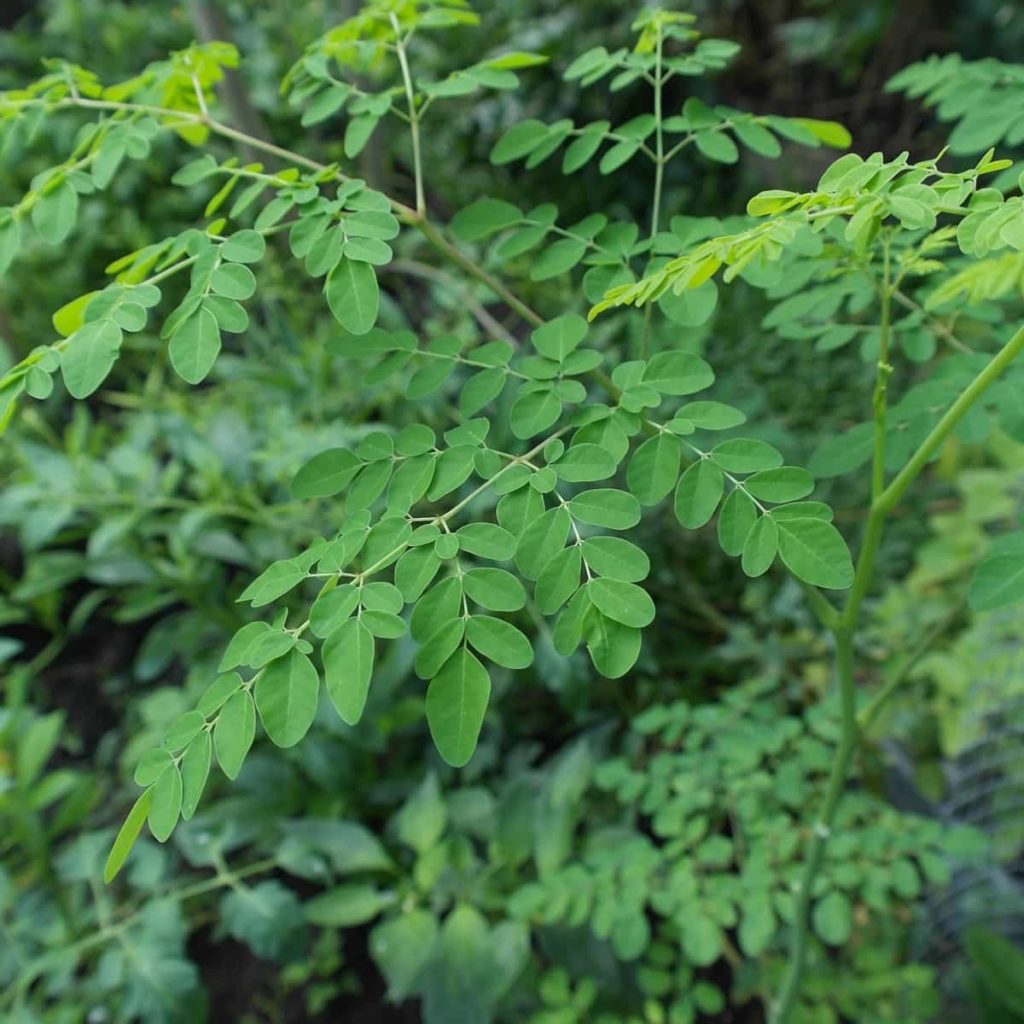
As long as rows are harvested at different times, leaves will always be ready to be harvested when needed. The powder can be made from fresh or dried leaves. Plants continue to grow new branches and leaves after each harvest. Therefore, a continuous supply of leaves will be provided by this method.
Do I need to dry Moringa seeds before planting?
You can plant Moringa seeds right into the ground, straight from the Moringa pods. It is unnecessary for them to dry out or age, as some seeds do. The germination rate of fresh seeds can be excellent for up to a year after they have been stored. Moringa seeds should be directly sown into the garden, as their long taproot makes transplanting them challenging.
Backfill the hole with compost and soil after digging about a foot deep and wide. Once mature, Moringa seeds can be planted as soon as they are ready, but don’t plant them during colder months when temperatures are below 15°C.
How long does Moringa take to grow?
Moringa trees can be grown up to 18 feet in less than six months, making it difficult to harvest the leaves and seeds. During the warm weather months, the tree will develop a bush-like habit. In cold weather, young Moringa trees will die back to the ground. Re-growth typically occurs when overnight low temperatures rise above 60 degrees in the spring. The Moringa tree becomes more frost-hardy and less susceptible to death after four or five years.
Should I cut my Moringa tree?
Moringas respond well to aggressive pruning, and due to their fast growth rate, many gardeners limit their height to 12 feet or less. This restriction of plant growth by pruning keeps their pods within reach and makes trimming higher branches more manageable as the tree ages. Trim older branches at least once a year and shape new growth according to your preference. Removing more of the plant than you normally would when trimming other trees and shrubs is okay because these trees are tougher than they appear.
Conclusion
Unlike other trees, Moringa can be grown in the backyard easily. Anywhere you plant this tree, it will grow well regardless of the growing conditions. A Moringa tree could be the perfect addition to your garden, whether you want to spruce it up or add plants that provide health and nutritional benefits.
- Sheep Farming Business Plan for Beginners
- Aquaponic Farming at Home: A Step-By-Step Guide
- Profitable Village Farming Business Ideas in 2024
- High-Yield Aquaculture: Fast-Growing Fish for Farming
- Effective Fish Pond Construction Techniques for Beginners
- Irrigation and Water Management in Pineapple Farming
- Blossom to Harvest: Mastering Flowering and Pollination in Papaya Farming
- Pig Fattening Essentials: From Selection to Sale for Beginners
- Raising Wagyu Cattle: A Complete Guide for Premium Beef Production
- Soil Types and Their Water Holding Capacity
- Optimizing Irrigation Schedules for Coconut Groves for Enhanced Yield
- Espresso Your Garden: Coffee Grounds for Healthier Acid-Loving Plants
- The Best Soil Mix for Snake Plants: How to Mix Your Own Snake Plant Soil
- Green Thumb Success: Expert Tips for Cultivating Greenhouse Beans All Year Round
- Bloom All Year Round: The Ultimate Guide to Indoor Hyacinth Care
- Eco-Friendly Gardening: How to Make Liquid Fertilizer from Kitchen Waste
- Ultimate Guide to Grow Anise in Pots: Explore Seed Propagation to Harvesting
- Guide to Raising Chester White Pigs: Discover Breed Facts to Growth Management
- Mastering the Elegance: The Ultimate Guide to Weeping Cherry Tree Care, Planting, and Maintenance
- Ultimate Guide to Planting Garlic in Grow Bags: Growing Strategies for Beginners
- How to Fix Spider Plant Leaf-Related Problems: Natural and Organic Remedies
- 10 Reasons Why Your Tulsi Plant is Shedding Leaves: Home Remedies and Solutions
- Optimizing Growth and Yield: The Advantages of Palm Bunch Ash Fertilizer
- Utilizing Neem Oil Extract as a Natural Pesticide for Hydrangea
- From Soil to Harvest: Various Ways in Which Farmers Can Use AI Tools
- Steps to Encourage and Induce Citrus Flowers: A Comprehensive Guide
- How to Fix Snake Plant Leaf-Related Issues: Natural and Organic Remedies
- Transform Your Garden into a Fragrant Oasis with Raat Ki Rani (Night Blooming Jasmine)
- Discover the Ideal Chicken Breeds for Philippine Farms
- How to Create a Poultry Egg Farm Business Plan for Profits
- Grow Lemon Cucumbers Like a Pro: Insider Techniques for Bountiful Yields
- Ultimate Guide to Caring for Your Pink Princess Philodendron: Tips for Thriving Variegation
- Areca Nut Profit Per Acre: Calculating Yield and Cost of Cultivation
- How Kaveri Chicken is Becoming a More Profitable Breed in Indian Backyards
- Transform Your Barn: 9 Steps to Convert a Horse Stall into a Chicken Coop
- Exploring Suffolk Sheep Disadvantages with Limitations and Challenges

